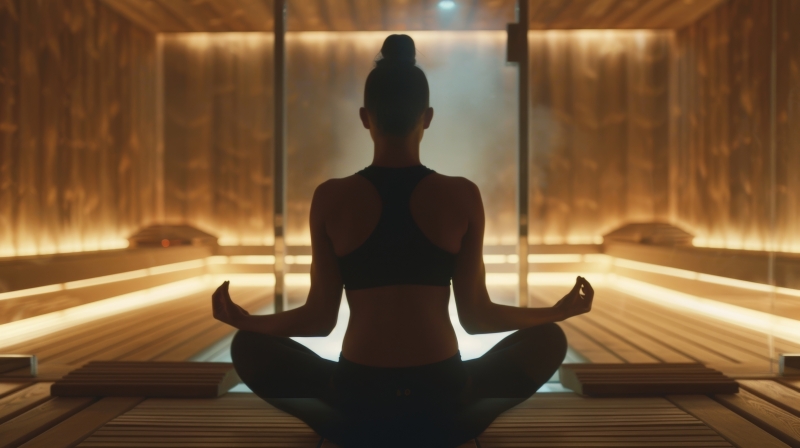
When it comes to choosing a yoga practice, there are many options available, including hot yoga and traditional yoga. Both types of yoga offer unique benefits and challenges, making it important to consider your personal preferences and goals when deciding which one is right for you. In this article, we will explore the differences between hot yoga and traditional yoga to help you make an informed decision about which practice aligns best with your needs.

When it comes to choosing a yoga practice, there are so many options out there that it can be overwhelming to decide which one is right for you. One popular choice that has been gaining traction in recent years is hot yoga. Hot yoga is a form of yoga that is practiced in a heated room, usually around 95-105 degrees Fahrenheit. This intense heat is said to help increase flexibility, detoxify the body, and promote relaxation. But is hot yoga really better than traditional yoga? Let’s take a closer look at the benefits of hot yoga to help you decide.
One of the main benefits of hot yoga is that the heat allows your muscles to stretch more deeply than they would in a regular yoga class. This can help improve your flexibility and range of motion, making it easier to move through the poses with ease. I remember the first time I tried hot yoga, I was amazed at how much deeper I could stretch compared to a regular yoga class. It felt like my muscles were melting into the poses, allowing me to go further than I ever thought possible.
Another benefit of hot yoga is that the heat can help you detoxify your body through sweat. Sweating is a natural way for your body to release toxins, and the intense heat of a hot yoga class can help you sweat more than you would in a regular yoga class. I always leave a hot yoga class feeling like I’ve just had a good sweat session at the gym, which leaves me feeling refreshed and rejuvenated.
In addition to the physical benefits, hot yoga can also help promote relaxation and reduce stress. The heat of the room can help calm your mind and focus your attention on the present moment, allowing you to let go of any worries or distractions. I find that after a hot yoga class, I feel more centered and at peace, which helps me navigate the rest of my day with a sense of calm and clarity.
While hot yoga has many benefits, traditional yoga also has its own unique advantages. Traditional yoga classes are typically done in a room temperature environment, which can be more comfortable for some people who find the heat of hot yoga to be too intense. Traditional yoga focuses on alignment, breath work, and mindfulness, which can help improve your posture, reduce stress, and increase your overall sense of well-being.
Ultimately, the choice between hot yoga and traditional yoga comes down to personal preference and what works best for your body and mind. Some people may thrive in the intense heat of a hot yoga class, while others may prefer the more gentle approach of a traditional yoga class. It’s important to listen to your body and choose a practice that feels right for you.
In conclusion, both hot yoga and traditional yoga have their own unique benefits that can help improve your physical and mental well-being. Whether you prefer the intense heat of a hot yoga class or the gentle flow of a traditional yoga class, the most important thing is to find a practice that resonates with you and makes you feel good. So go ahead and give both a try, and see which one speaks to your body and soul.

When it comes to yoga, there are so many different styles and practices to choose from. One of the most popular debates in the yoga community is the comparison between hot yoga and traditional yoga. Both have their own unique benefits and challenges, so it’s important to understand the differences between the two before deciding which one is right for you.
Let’s start with traditional yoga. Traditional yoga is typically practiced in a room temperature environment, with a focus on alignment, breath, and mindfulness. Classes can vary in intensity, from gentle and restorative to more vigorous and challenging. In traditional yoga, the emphasis is on connecting the mind, body, and spirit through a series of poses and breathing exercises.
On the other hand, hot yoga is practiced in a heated room, usually around 95-105 degrees Fahrenheit. The heat is said to help increase flexibility, detoxify the body, and promote relaxation. Hot yoga classes are often more physically demanding than traditional yoga, as the heat can make the poses more challenging and intense. Many people find that the heat helps them to sweat out toxins and release tension in their muscles.
If you’re someone who enjoys a good sweat and likes to push yourself physically, hot yoga might be the right choice for you. The heat can be invigorating and energizing, and many people find that they feel more flexible and strong after a hot yoga class. However, it’s important to listen to your body and not push yourself too hard, especially if you’re new to hot yoga or have any health concerns.
On the other hand, if you prefer a more gentle and meditative practice, traditional yoga might be a better fit. Traditional yoga classes often focus on slow, deliberate movements and deep breathing, which can help to calm the mind and reduce stress. Traditional yoga is also a great option for beginners or those who are looking to improve their flexibility and strength gradually.
One of the main differences between hot yoga and traditional yoga is the intensity of the practice. Hot yoga classes are typically more fast-paced and physically demanding, while traditional yoga classes tend to be slower and more focused on alignment and breath. If you’re looking for a workout that will make you sweat and challenge your body, hot yoga might be the way to go. But if you’re more interested in the mental and spiritual benefits of yoga, traditional yoga might be a better fit for you.
Ultimately, the choice between hot yoga and traditional yoga comes down to personal preference and what you’re looking to get out of your practice. Both styles have their own unique benefits and challenges, so it’s important to try out a few classes of each to see which one resonates with you the most. Whether you’re looking to improve your physical fitness, reduce stress, or connect with your inner self, both hot yoga and traditional yoga can help you achieve your goals. So why not give them both a try and see which one feels right for you?
When it comes to choosing a yoga practice that’s right for you, there are so many options to consider. One of the most popular debates in the yoga community is the comparison between hot yoga and traditional yoga. Both practices have their own unique benefits and drawbacks, so it’s important to understand the differences before deciding which one is right for you.
Let’s start by talking about hot yoga. This style of yoga is typically practiced in a heated room, usually around 95-105 degrees Fahrenheit. The heat is said to help increase flexibility, detoxify the body, and promote relaxation. Many people find that the heat allows them to go deeper into poses and push themselves further than they would in a non-heated class. However, the intense heat can also be a challenge for some, especially if you’re not used to exercising in such high temperatures. It’s important to stay hydrated and listen to your body during a hot yoga class to avoid overheating or dehydration.
On the other hand, traditional yoga is typically practiced in a room temperature or slightly heated environment. This style of yoga focuses on alignment, breath control, and mindfulness. Traditional yoga classes often include a combination of standing, seated, and balancing poses, as well as breathing exercises and meditation. Many people find that traditional yoga helps them improve their posture, reduce stress, and increase overall strength and flexibility. However, some may find traditional yoga to be less intense than hot yoga, as the focus is more on proper alignment and technique rather than pushing yourself to your limits.
So, how do you decide which style of yoga is right for you? It really comes down to your personal preferences and goals. If you enjoy a challenging workout and don’t mind the heat, hot yoga might be the perfect fit for you. On the other hand, if you prefer a more gentle and meditative practice, traditional yoga might be more your speed. It’s also important to consider any health conditions or injuries you may have, as certain styles of yoga may be more beneficial or harmful depending on your individual needs.
Ultimately, the most important thing is to find a yoga practice that feels good for your body and mind. Whether you choose hot yoga, traditional yoga, or a combination of both, the key is to listen to your body, stay present in the moment, and enjoy the journey. Yoga is a personal practice, and what works for one person may not work for another. So don’t be afraid to try out different styles and teachers until you find the perfect fit for you.
In conclusion, both hot yoga and traditional yoga have their own unique benefits and drawbacks. The key is to choose a practice that aligns with your goals, preferences, and physical abilities. Whether you prefer the intense heat of a hot yoga class or the mindful movements of a traditional yoga practice, the most important thing is to find a practice that brings you joy and helps you connect with your body and breath. So go ahead, roll out your mat, and start exploring the wonderful world of yoga. Namaste.In conclusion, the choice between hot yoga and traditional yoga ultimately depends on personal preference and fitness goals. Hot yoga offers the benefits of increased flexibility and detoxification through the heat, while traditional yoga focuses on alignment and mindfulness. It is important to consider your own physical abilities and comfort level when deciding which type of yoga is right for you. Ultimately, both forms of yoga can provide numerous health benefits and can be a valuable addition to any fitness routine.
Discover the benefits of Hot Yoga and Traditional Yoga and find out which one is right for you! Visit here to learn more.
Leave a comment